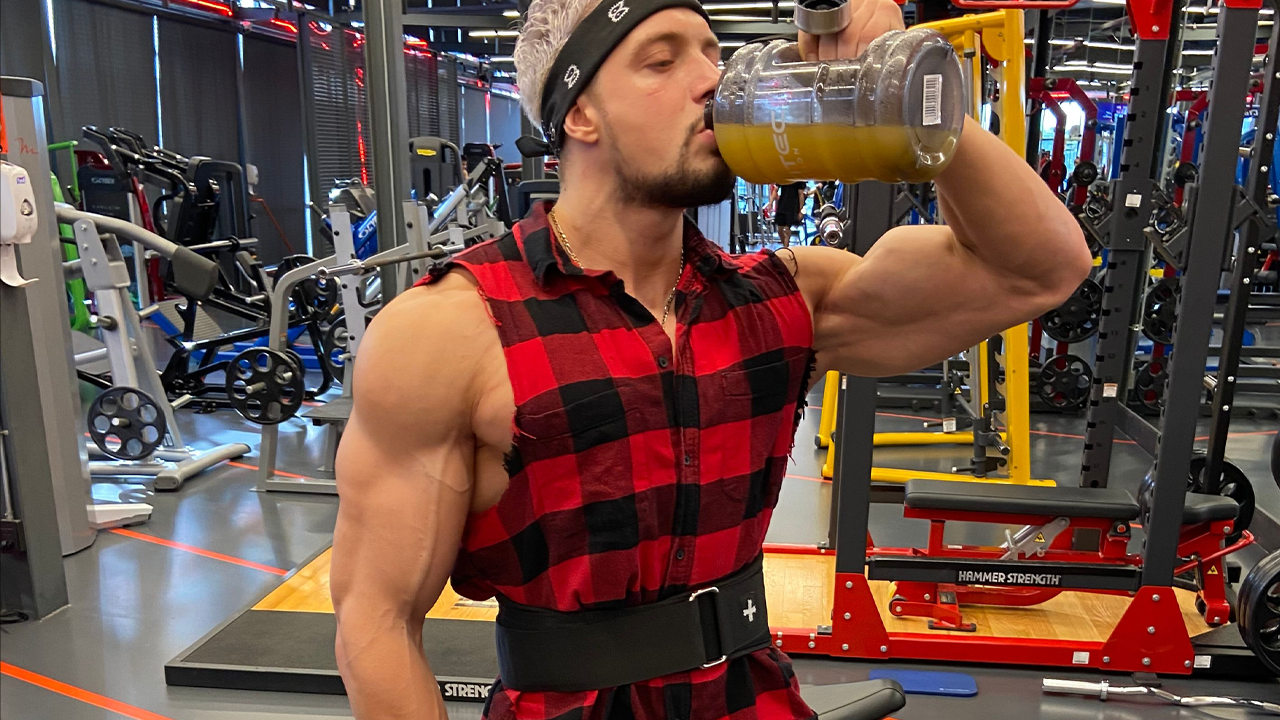Everyday millions of people step into the gym with a goal to build muscle, increase strength, and make some serious gains.
Few, however, realize the kind of success they seek.
But, why is this?
Are they not using the right training program?
Is their pre workout stack not optimal?
Are they eating the wrong type of foods?
Do they need to hire a personal trainer?
We’ve identified the five most important keys to getting more results from your time spent in the gym and getting better results!
5 Keys for More Muscle Growth
#1 Consume Enough Calories
This may seem simple enough, but the truth is that many individuals who struggle to build muscle fast (particularly the hardgainers) don’t eat enough calories.
It boils down to simple thermodynamics.
If you want to gain weight, you need to feed your body more calories than it requires to maintain its weight. This calorie surplus supplies the body with the essential material it needs to support muscle recovery as well as give it enough substrates to build new muscle tissue.
But, what about “gain-taining” or “main-gaining”?
Sure, it’s possible to gain muscle while eating at maintenance or in a deficit. But, by and large, only newbies and those very overweight are able to build muscle while not in a calorie surplus. The most efficient way for you to build more muscle this year is to be in an energy surplus.
If you’re not sure how many calories you currently are eating, start by tracking everything you eat daily for a week. You can use any number of macro tracking apps, such as MyFitnessPal, or good ol’ fashioned pen and paper.
Once you have an idea of how many calories you’re eating, you can then estimate how many calories you need to eat to build muscle using one of the many free calorie calculators on the internet.
Now, it’s important to keep in mind that these calculators merely provide an estimate of your energy intake requirements to build muscle.
Use this number as a go-by for a week or two and track your weight. If you’re gaining .25-.5 pounds per week, then you’re eating the right amount of calories. If your weight isn’t going up, then add another 250 calories and track your weight for another week or two.
#2 Consume Enough Protein
After accounting for total calories, the next most variable to account for in your nutrition is protein.
It literally supplies the building blocks your body needs (amino acids) to repair damaged tissues (like muscle) as well as build new muscle.
Current recommendations for optimizing muscle growth are to consume roughly between 0.8-1 gram of pound per body weight per day. Ideally, you want to space your protein feedings evenly throughout the day across 3-6 meals, depending on your schedule and preference.
The reason you want to distribute your protein throughout the day is that the body doesn’t have a mechanism by which to store amino acids for later use in the way it does carbohydrates (glycogen) and fats (adipose tissue).
Consuming a high-quality source of protein every 4-5 hours provides a steady pulse of essential amino acids your body needs to ramp up protein synthesis and support the body’s muscle building machinery.
A few of our favorite protein sources to include in a muscle-building diet are:
#3 Focus on the Basics
The best hypertrophy routines all have one thing in common -- they prioritize the bread-and-butter exercises like squats, deadlifts, presses, rows, and pulls.
These exercises provide a tremendous amount of muscle-building “bang” for your “exercise” buck.
You don’t need 10 different variations of curls, kickbacks, or presses in your training program. You also don’t need to “confuse” the muscles by changing exercises or routines every week.
If you want to build more muscle this year, you need to be consistent with your workouts and get strong on the basic exercises.
Compound movements to base your training sessions around include:
- Squats
- Deadlifts
- Overhead presses
- Bench presses (barbells, dumbbells, incline, flat, etc.)
- Rows
- Pull ups
These exercises also have the largest range for progression, especially compared to isolation movements like curls and laterals.
Now, this isn’t to say that isolation movements don’t belong in a hypertrophy program (they certainly do). But, isolation movements are secondary to compound movements.
Base your program on the basic compound movements and watch your gains skyrocket this year.
#4 Push for Progress
Performing the right exercises isn’t enough to guarantee muscle growth, at least not long term.
Sure, if you’re a novice, simply doing anything in the gym will be enough of a stimulus to build muscle.
But, as you come more advanced, doing the same old thing isn’t enough to force your muscle to grow.
This doesn’t mean you need to change exercises. It does mean that you need to do more than what you previously did.
In other words, you should push for progress, relentlessly, each and every time you show up to the gym (i.e. progressive overload).
Progressive overload comes in many forms, including:
- Adding weight
- Adding reps
- Reducing rest
- Increasing range of motion
- Increasing time under tension
Logging your workouts in a log book or training journal helps you keep track of what you have accomplished so that you know what you need to do the next session in order to keep progressing and making gains.
#5 Use the Right Supplements
Spend enough time reading the internet, social media, or fitness magazines and you’ll be told that supplements are the “secret weapon” you need to build slabs of muscle or lose fat fast.
The truth is that no amount of supplements will make up for poor diet or substandard effort in the gym.
In other words, if you’re not training hard or eating to support your goals, you will not get the results you want, regardless of how many supplements you take.
That being said, if you’re doing the things we outlined above, then proper supplementation can help provide an edge.
Research supports the benefits of whey protein, creatine, betaine, and even caffeine, among others, that can help increase performance and support lean mass gains.
Equally important (if not more so) are supplements that support recovery.
And, when it comes to recovery there’s no more potent weapon in your arsenal than sleep.
Yet, many individuals struggle to get enough quality sleep each night.
To help improve sleep quality, it can be beneficial to:
- Avoid caffeine and alcohol before bed
- Establish a set bedtime
- Institute a bedtime ritual
- Read/meditate
- Limit blue light exposure 2 hours before bed
- Avoid sources of stress before bed (e.g. texts, news, social media, emails, etc.)
- Make your room dark and cool
- Wear loose, comfortable clothing
For additional help unwinding and getting quality sleep, using a nighttime relaxation and recovery aid like EAA Sleep may be beneficial.
Takeaway
Building muscle requires consistency, dedication, effort, and patience.
Use the tips above to get those gains this year and make this your most successful muscle building venture yet!















Leave a comment
This site is protected by hCaptcha and the hCaptcha Privacy Policy and Terms of Service apply.